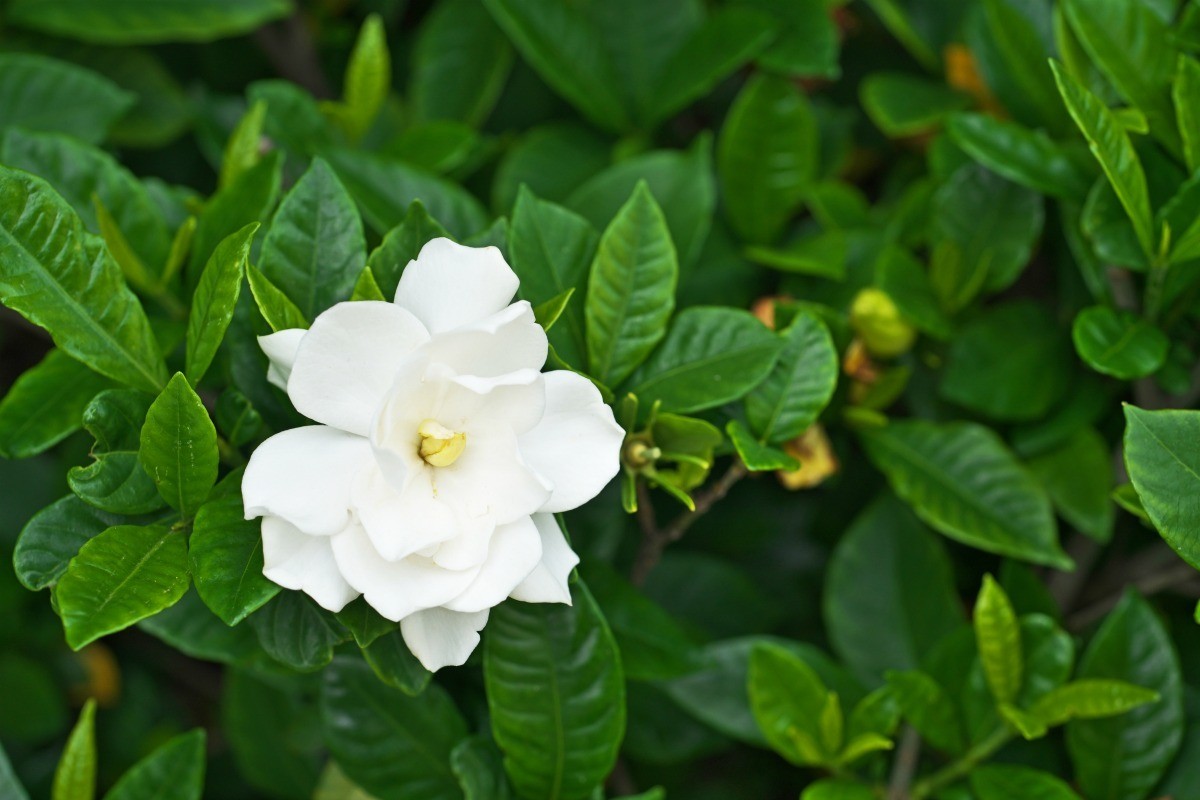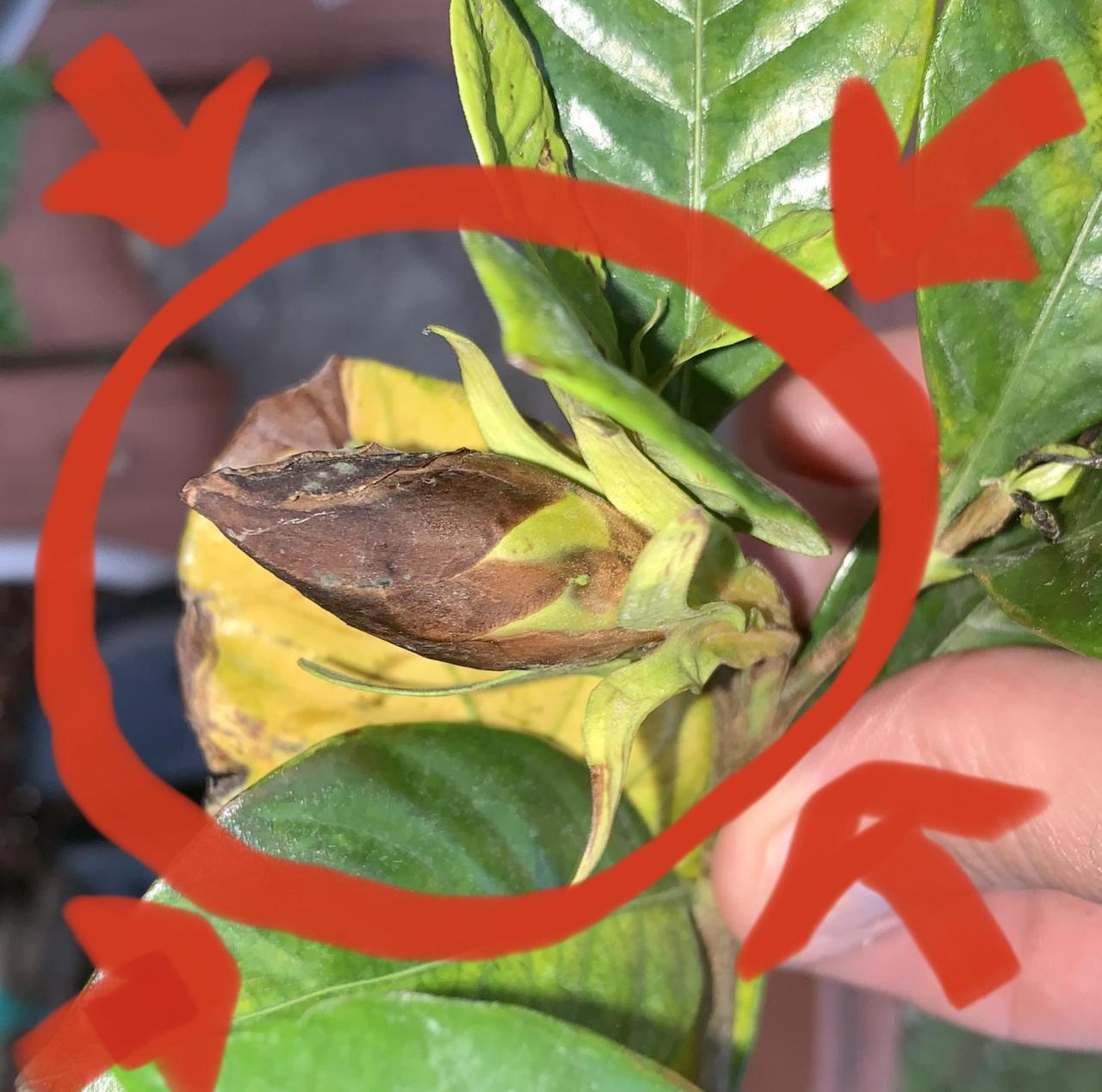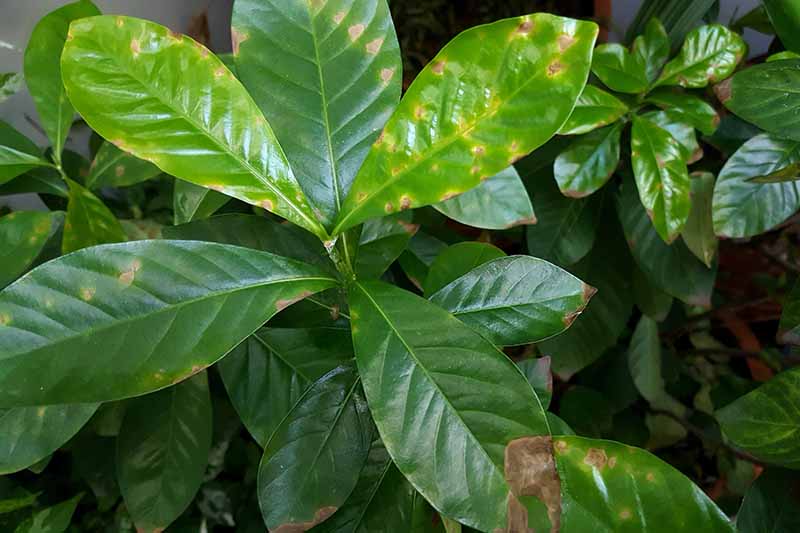Gardenia plants are beloved for their fragrant white flowers and dark green foliage. However, many gardeners face a common problem: gardenia brown leaves. This issue can be distressing, not only because it affects the plant’s aesthetics but also because it signals potential health problems. Understanding why your gardenia leaves are turning brown and how to rectify this condition is crucial for maintaining a healthy plant. In this comprehensive guide, we will explore the various reasons behind gardenia brown leaves, effective solutions, and preventive measures you can take to ensure your gardenia thrives.
Why Are My Gardenia Leaves Turning Brown?

Before addressing solutions, it’s important to pinpoint the reasons behind the browning of gardenia leaves. Here are some of the most common causes:
1. Overwatering 🌧️
One of the most prevalent reasons for gardenia leaves turning brown is overwatering. Gardenias prefer moist, well-drained soil. When the roots sit in water for too long, they can begin to rot, leading to brown leaves. Signs of overwatering include:
- Yellowing leaves that eventually turn brown
- Root rot and mushy roots when inspected
2. Underwatering
On the opposite end of the spectrum, underwatering can also lead to brown leaves. Gardenias require consistent moisture. If they do not receive enough water, the leaves can become dry, brittle, and turn brown. Look for:
- Leaves that curl or become crispy
- Soil that is excessively dry
3. Poor Soil Quality
Soil quality plays a significant role in the health of gardenia plants. They thrive in acidic soil with a pH between 5.0 and 6.0. If your soil is too alkaline or lacks essential nutrients, it can cause brown leaves. Common soil-related issues include:
- Lack of drainage, leading to water retention
- Insufficient nutrients such as nitrogen, phosphorus, and potassium
4. Pests and Diseases
Pests such as aphids, spider mites, and scale can sap the vitality of gardenias, leading to browning leaves. Additionally, diseases like root rot or powdery mildew can also cause similar symptoms. Watch out for:
- Sticky residue on leaves (indicative of pests)
- Visible pests or signs of disease on the plant
5. Environmental Stress

Gardenias are sensitive to changes in their environment. Factors such as temperature extremes, humidity levels, and sudden changes in sunlight can cause stress, leading to brown leaves. Common environmental stressors include:
- Exposure to freezing temperatures
- High heat and low humidity conditions
Identifying the Problem
Identifying the specific cause of brown leaves in your gardenia plant is crucial. Here’s a simple table to help you determine the potential cause based on symptoms:
| Symptoms | Potential Causes |
|---|---|
| Brown tips or edges | Underwatering or low humidity |
| Yellowing leaves followed by browning | Overwatering |
| Visible pests | Pests and diseases |
| Soft, mushy roots | Root rot (often due to overwatering) |
| General leaf drop | Environmental stress |
How to Fix Brown Leaves on Gardenia
Once you have identified the cause, taking corrective actions can help revive your gardenia plant. Here are effective solutions for the most common issues:
1. Adjust Watering Practices
Finding the right balance in watering is crucial. If overwatering is the issue, reduce the frequency of watering and allow the top inch of soil to dry out between waterings. If underwatering is the problem, create a consistent watering schedule that ensures adequate moisture without over-soaking the soil. Consider the following tips:
- Check soil moisture with your finger; if it’s dry, it’s time to water.
- Use well-draining soil to prevent water retention.
2. Improve Soil Quality
If poor soil quality is the issue, consider repotting your gardenia in a high-quality potting mix designed for acid-loving plants. Look for soil amendments like:
- Pine bark mulch to improve drainage
- Peat moss or compost to increase soil acidity
Note: Always ensure that your pots have drainage holes to prevent water from accumulating at the bottom.
3. Pest Control
If you discover pests, treat your gardenia with insecticidal soap or neem oil. Regular inspections can help catch infestations early before they cause significant damage. Here are a few actions you can take:
- Gently wash the leaves with soapy water to remove pests.
- Introduce beneficial insects like ladybugs to control aphid populations.
4. Environmental Adjustments
To mitigate environmental stress, ensure your gardenia is placed in an area where it receives indirect sunlight and is protected from extreme temperatures. Consider these adjustments:
- Move plants indoors during frost or extreme heat conditions.
- Increase humidity levels with a humidifier or by placing a water tray nearby.
5. Fertilization
Healthy gardenias need nutrients to thrive. Fertilize your gardenia with a balanced fertilizer specifically designed for acid-loving plants. Follow the instructions on the package for best results, typically:
- Fertilize every 4-6 weeks during the growing season.
- Reduce fertilization in winter when the plant is dormant.
Preventive Measures for Healthy Gardenias: Gardenia Brown Leaves
Taking proactive steps can help prevent gardenia brown leaves in the first place. Here are essential practices to keep your gardenia healthy:
1. Regular Inspections
Inspect your gardenia regularly for signs of pests or disease. Early detection is key to preventing severe damage. Look for:
- Changes in leaf color or texture
- Signs of pests, such as webbing or droppings
2. Proper Pruning, Gardenia Brown Leaves
Pruning helps remove dead or diseased parts of the plant, encouraging new growth. It is best to prune your gardenia after flowering. Remember:
- Use sharp, clean tools to make clean cuts.
- Avoid cutting too much foliage at once; aim for gradual pruning.
3. Fertilizer and Nutrient Management
Maintain a consistent fertilization schedule with appropriate products. Over-fertilizing can be just as harmful as under-fertilizing. Follow these guidelines:
- Choose a slow-release fertilizer to provide a steady nutrient supply.
- Monitor your gardenia’s response and adjust fertilization as necessary.
4. Optimal Planting Location
Choose a suitable location for your gardenia, ideally with partial shade and protection from harsh winds. Consider:
- Planting near taller plants to provide some shade.
- Using windbreaks to shield plants from strong winds.
Conclusion
Experiencing brown leaves on your gardenia can be concerning, but with the right knowledge and care, you can revive your plant and prevent future issues. By understanding the underlying causes, making necessary adjustments, and adopting preventive measures, you can enjoy the beauty and fragrance of healthy gardenias in your garden. Remember, a well-cared-for gardenia is a joy to have and can be a centerpiece in your outdoor space! 🌼
